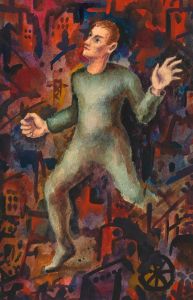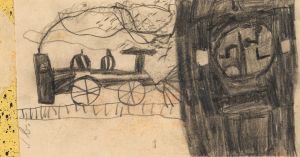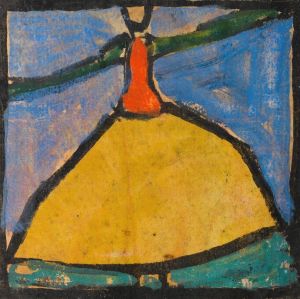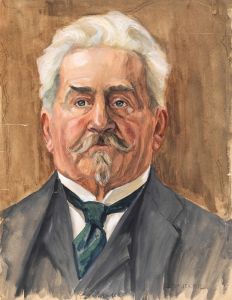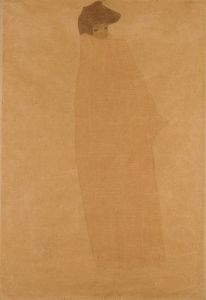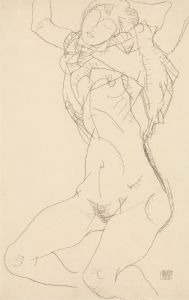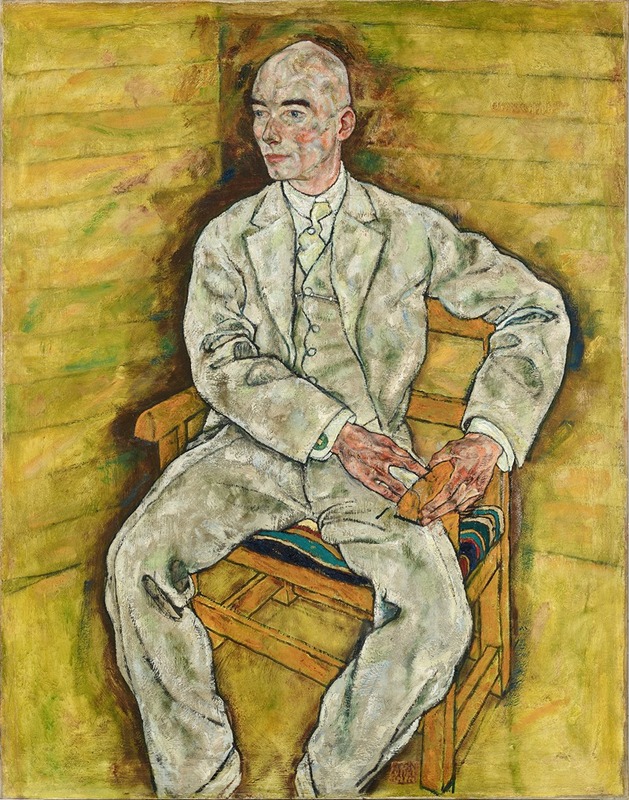
Victor Ritter von Bauer
A hand-painted replica of Egon Schiele’s masterpiece Victor Ritter von Bauer, meticulously crafted by professional artists to capture the true essence of the original. Each piece is created with museum-quality canvas and rare mineral pigments, carefully painted by experienced artists with delicate brushstrokes and rich, layered colors to perfectly recreate the texture of the original artwork. Unlike machine-printed reproductions, this hand-painted version brings the painting to life, infused with the artist’s emotions and skill in every stroke. Whether for personal collection or home decoration, it instantly elevates the artistic atmosphere of any space.
Egon Schiele, an Austrian painter known for his distinctive style and contribution to early 20th-century art, created the portrait "Victor Ritter von Bauer" in 1918. Schiele, a protégé of Gustav Klimt, was a leading figure in the Expressionist movement, renowned for his raw, emotive works that often explored themes of sexuality, death, and the human form.
The subject of the painting, Victor Ritter von Bauer, was a notable figure during Schiele's time, although specific details about his life and relationship with Schiele are not extensively documented. The title "Ritter" indicates that Bauer was a knight, a title of nobility in German-speaking countries, suggesting he held a significant social position. However, the exact nature of his achievements or his connection to Schiele remains largely unrecorded in historical texts.
Schiele's portrait of Bauer is characteristic of his mature style, which is marked by bold lines, a limited but striking color palette, and an intense psychological depth. The painting captures Bauer with a direct gaze, a common feature in Schiele's portraits, which often convey a sense of introspection and vulnerability. Schiele's use of line and form in this work exemplifies his ability to convey complex emotional states and the inner life of his subjects.
The year 1918 was significant for Schiele, as it marked both a period of prolific artistic output and the end of his life. Tragically, Schiele died at the age of 28 from the Spanish flu pandemic, just three days after his pregnant wife, Edith. Despite his short life, Schiele left behind a substantial body of work that has had a lasting impact on modern art.
Schiele's portraits, including "Victor Ritter von Bauer," are celebrated for their psychological intensity and innovative approach to the human figure. His work often challenged conventional aesthetics, pushing the boundaries of traditional portraiture. Schiele's ability to capture the essence of his subjects with minimalistic yet expressive techniques has earned him a prominent place in art history.
The painting is part of Schiele's broader oeuvre, which includes numerous portraits, self-portraits, and figurative works. His art is characterized by a distinctive use of line, often described as nervous or electric, and a palette that ranges from muted earth tones to vivid, almost jarring colors. These elements combine to create compositions that are both visually arresting and emotionally resonant.
Today, Egon Schiele's works, including "Victor Ritter von Bauer," are held in high regard and are featured in major art collections and exhibitions worldwide. His influence can be seen in the works of later artists who sought to explore the complexities of human emotion and identity through innovative artistic expressions. Schiele's legacy continues to be celebrated for its boldness, emotional depth, and enduring impact on the trajectory of modern art.







